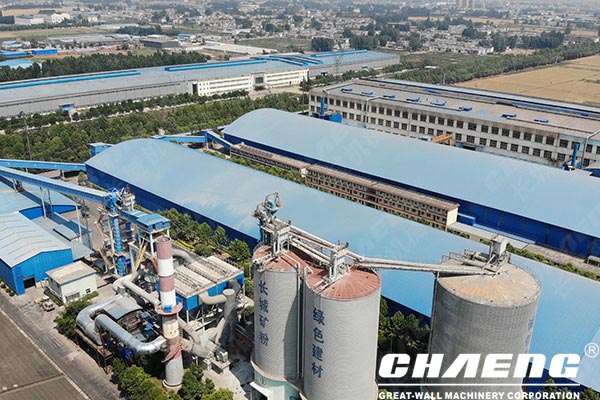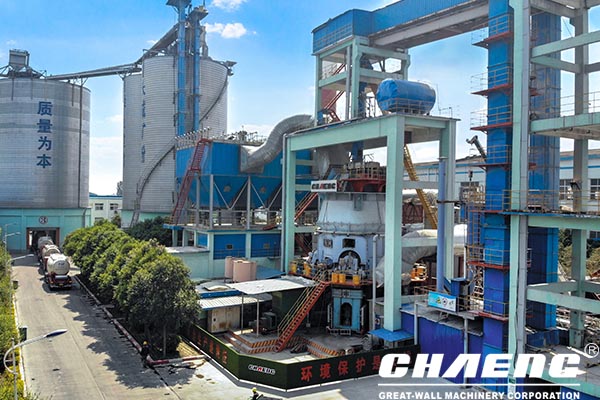Chaeng Industrial Waste Slag Test Base has a total investment of 2.1 million yuan. It has a complete vertical mill grinding test system, one ball mill grinding test system, and more than 20 sets of various powder and concrete test equipment, which can meet the requirements of steel slag, slag, etc. Various types of industrial waste slag powder activity, fineness, grindability, metal consumption, concrete workability, tensile, compressive strength and other tests, to provide equipment selection and comprehensive utilization schemes for maximizing the utilization of industrial waste slag resources Reference value basis.
Seondly. Main product GRMS series slag/steel slag vertical mill
1. Energy saving: high grinding efficiency, single electromechanical consumption is about 30 degrees;
2. Environmental protection: negative pressure production, no dust spillage;
3. The reamer does not block the material when feeding, the sealing effect is good, and the operation and maintenance are convenient;
4. Using a new type of high-efficiency cage rotor powder concentrator, the specific surface area of the finished product can reach 400~550㎡/kg;
Thirdly. Demonstration training base for 600,000 t/a of slag powder production line
(1) Low gas consumption
The utilization rate of the circulating flue gas in the traditional process system is only 40%~60%, and the utilization rate of the circulating flue gas in the Xinxiang Great Wall demonstration line system can reach 80%~90%, that is, more heat energy is reused, so the system gas consumption is low.
(2) Low nitrogen oxide emission concentration
The flue gas circulating hot blast stove is adopted, and the circulating flue gas at 80~90℃ is passed into the furnace of the hot blast furnace, which reduces the flame temperature in the furnace and reduces the generation of thermal nitrogen oxides. Coupled with the unique low-nitrogen combustion technology, the nitrogen oxide concentration of the natural gas-fired flue gas circulating hot blast stove system can be controlled at <50mg/m³.
(3) Less exhaust gas and dust
Only 10%-20% of the exhaust gas from the system is discharged into the atmosphere through the chimney, which greatly reduces the total exhaust gas emissions and the total dust emissions.
(4) High reliability of flue gas pipeline
In the traditional process system, the temperature of the flue gas in the outlet duct of the hot blast stove is generally 550~700℃, and the flue gas duct is easily damaged; while the outlet duct temperature of the flue gas circulating hot blast stove is only 200~300℃, and the flue gas duct has high reliability.
(5) Low system maintenance cost
Traditional gas-fired hot-blast stoves are lined with refractory bricks, and refractory bricks need to be replaced regularly; especially when the production line starts and stops frequently, the alternation of cold and heat makes the refractory bricks easily damaged and fall off. The flue gas circulating hot air stove does not need to be lined with refractory bricks, and there is no need to replace the refractory bricks regularly or worry about the problem of refractory brick falling off.





